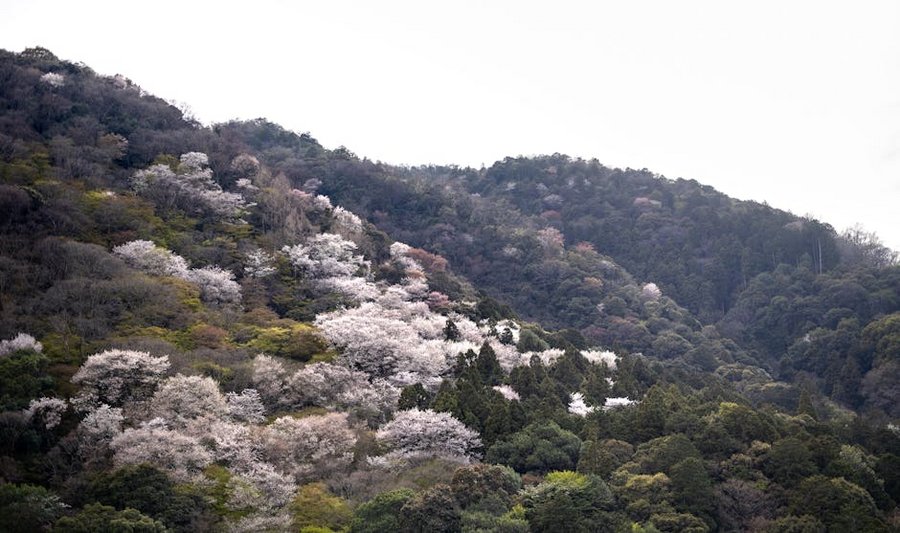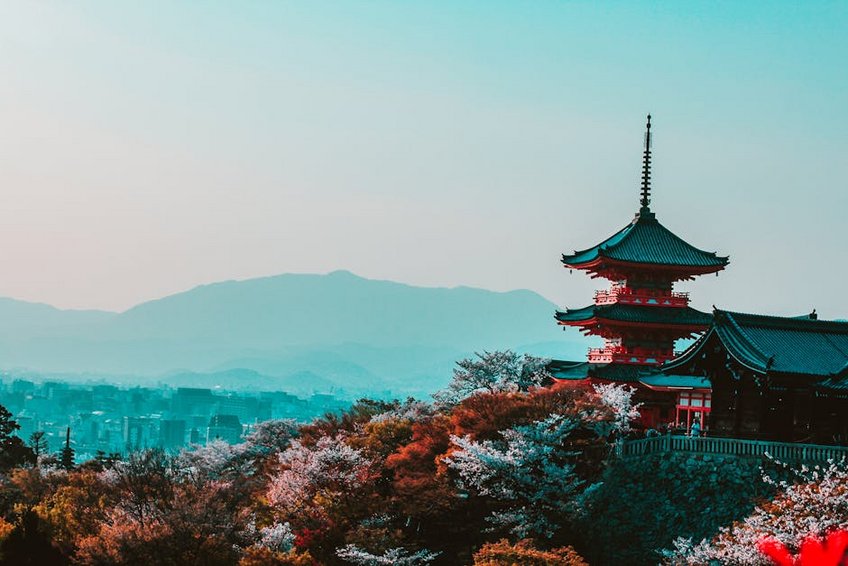Cherry Blossom Season in Kyoto
Experiencing cherry blossom season in Kyoto is like stepping into a living painting where delicate pink petals transform the ancient city into something truly magical. You’ll find yourself surrounded by centuries-old temples, traditional gardens, and historic streets all framed by these breathtaking blooms that create an atmosphere you simply won’t find anywhere else in the world. The Japanese call this phenomenon “hanami,” which literally means “flower viewing,” and it represents one of the most cherished cultural traditions in Japan. For travelers from Western countries, witnessing Kyoto’s cherry blossoms offers not just incredible photo opportunities but a deep cultural immersion that connects you to Japan’s rich history and appreciation for nature’s transient beauty. Planning your visit requires careful timing and preparation, but the reward is an unforgettable experience that will stay with you long after the petals have fallen.
Cherry Blossom Season in Kyoto Essential Information
Understanding the fundamentals of Kyoto’s cherry blossom season will significantly enhance your experience and help you plan effectively. The season typically occurs between late March and mid-April, though exact timing varies each year based on weather conditions. Peak bloom usually lasts only about one week, making advance planning absolutely essential. During this period, Kyoto transforms into one of Japan’s most popular destinations, with hotels booking months in advance and popular viewing spots becoming increasingly crowded. The city’s combination of historical architecture and natural beauty creates perfect hanami settings that attract both domestic and international visitors. You’ll want to familiarize yourself with key terms like “sakura” (cherry blossoms), “hanami” (flower viewing parties), and “yozakura” (nighttime illuminations) to fully appreciate the cultural context of your experience.
When Do Cherry Blossoms Typically Bloom in Kyoto?
- Average start date: Last week of March (varies by 5-7 days annually)
- Peak bloom period: Usually first week of April, lasting 5-7 days
- Full bloom prediction: Japan Meteorological Corporation releases forecasts starting in January
- Best viewing: Early morning (6-8 AM) for fewer crowds and soft lighting
- Budget travelers: $80-120 USD per day (hostels, convenience store meals, public transportation)
- Mid-range travelers: $150-250 USD per day (business hotels, restaurant meals, some taxis)
- Luxury experience: $350-600+ USD per day (ryokan with kaiseki meals, private guides, premium viewing events)
- Japan Guide Cherry Blossom Forecast
- Official Kyoto Travel Guide
Key Cultural Significance of Hanami
The tradition of hanami dates back over a thousand years to the Nara Period, initially practiced by aristocracy before spreading to samurai society and eventually the general population. Today, it represents both appreciation for beauty and reflection on life’s transient nature—a concept known as “mono no aware” in Japanese philosophy. You’ll observe locals laying out blue tarps in parks hours in advance to secure prime viewing spots, then enjoying elaborate picnics with family, friends, and coworkers throughout the day and evening. This isn’t merely sightseeing; it’s a social ritual that reinforces community bonds and celebrates the arrival of spring after long winter months.

Cherry Blossom Season in Kyoto Planning Your Trip
Strategic planning separates a stressful cherry blossom experience from a magical one in Kyoto. You’ll need to book accommodations 6-9 months in advance, especially if you want to stay in traditional ryokan inns or hotels near prime viewing locations. Flight prices from the US and Europe typically increase by 30-50% during this period, so early booking is equally important for transportation. Consider purchasing a Japan Rail Pass before arrival if you plan to explore beyond Kyoto, as it offers significant savings on bullet train travel. The city becomes exceptionally crowded during peak bloom, so you’ll want to plan your itinerary with specific viewing times for each location, arriving early to avoid the largest crowds that gather from mid-morning through afternoon.
Best Time to Visit Kyoto for Cherry Blossoms
The ideal timing depends on your flexibility and tolerance for crowds. For the absolute best viewing conditions, aim for the first week of April when the trees typically reach full bloom. However, visiting during the “kaika” (first bloom) period in late March offers fewer crowds and the excitement of watching daily progress. The final days of bloom, when petals begin falling like pink snow (“sakura fubuki”), create equally magical scenes with fewer visitors. Weekdays are significantly less crowded than weekends, and early mornings (before 8 AM) provide peaceful viewing opportunities before tour groups arrive. If your schedule is flexible, consider planning for the shoulder periods just before or after peak bloom for a more relaxed experience.
Budget Planning and Costs
Essential Preparation Checklist
Preparing properly will make your cherry blossom experience significantly more enjoyable. Pack comfortable walking shoes as you’ll be covering 8-12 miles daily exploring different viewing locations. Bring layers as spring weather fluctuates between cool mornings (50°F/10°C) and warmer afternoons (65°F/18°C). Reserve pocket WiFi or SIM card for navigation and real-time bloom tracking apps. Learn basic Japanese phrases like “sumimasen” (excuse me) and “kirei desu ne” (it’s beautiful) to enhance interactions with locals. Download offline maps and transportation apps since internet connectivity can be spotty in crowded areas. Finally, pack a compact sitting mat if you plan to join hanami picnics, as sitting directly on the ground isn’t always comfortable.
Cherry Blossom Season in Kyoto Top Attractions and Activities
Kyoto offers countless spectacular viewing locations, each with unique characteristics and atmospheres. The Philosopher’s Path provides a serene canal-side walk beneath cherry tree tunnels, while Maruyama Park offers the classic hanami party experience with food stalls and evening illuminations. Kiyomizu-dera Temple presents breathtaking elevated views over cherry-blanketed hillsides, and Arashiyama district combines bamboo forests with riverside blossoms for diverse photographic opportunities. Beyond simply viewing flowers, you can participate in special seasonal events like cherry blossom-themed tea ceremonies, night illumination viewings at temples, and traditional boat rides along blossom-lined canals. Many temples and shrines extend their hours during this period and offer special evening openings with magical lighting effects that transform the experience entirely.
Must-See Highlights for Cherry Blossom Viewing
Certain locations deserve priority in your itinerary based on their iconic status and viewing quality. The Philosopher’s Path stretches 2 kilometers along a canal lined with hundreds of cherry trees, creating a breathtaking tunnel effect when in full bloom. Arrive before 8 AM to experience it in relative solitude. Maruyama Park features Kyoto’s most famous weeping cherry tree, spectacularly illuminated at night, plus numerous food stalls selling seasonal treats. Kiyomizu-dera Temple offers panoramic views over cherry-blanketed hillsides from its wooden stage, though be prepared for significant crowds. Arashiyama’s riverbanks combine cherry blossoms with mountain scenery, while Nijo Castle provides a historical setting with castle walls framed by delicate pink blossoms.
Hidden Gems and Local Favorites
While major sites attract overwhelming crowds, several lesser-known locations offer equally beautiful experiences with far fewer visitors. The Kyoto Botanical Gardens feature diverse cherry varieties with labeled explanations, perfect for learning about different blossom types. Shimogamo Shrine’s approach through a forest of trees creates a natural cathedral effect when blossoms overlap above the path. Daigo-ji Temple in southeastern Kyoto offers extensive grounds with multiple viewing areas that rarely reach critical crowd levels. The canal paths in the northern Higashiyama district provide local neighborhood scenes with cherry trees bending over quiet waterways. For something truly unique, take a train ride on the Sagano Romantic Railway through blossom-filled river valleys or visit Keage Incline where abandoned railway tracks become cherry-lined pathways.
Cherry Blossom Season in Kyoto Practical Travel Information
Navigating Kyoto during peak season requires understanding transportation options, accommodation realities, and crowd management strategies. The city’s efficient bus and subway system can become overwhelmed during cherry blossom season, so consider purchasing day passes for unlimited travel. Taxis become scarce during peak hours, so walking between nearby locations often proves faster than waiting for transportation. Accommodation prices increase significantly during this period, with many hotels implementing minimum stay requirements of 3-4 nights. You’ll find English widely spoken at major hotels and tourist areas, but learning basic Japanese phrases will enhance interactions at smaller establishments. Currency exchange is readily available, though credit cards are widely accepted except at small food stalls and traditional shops.
| Accommodation Type | Features and Considerations | Price Range (USD/night) |
|---|---|---|
| Business Hotels | Western-style, convenient locations, small rooms | $120-200 |
| Traditional Ryokan | Tatami rooms, kaiseki meals, onsen baths | $300-600+ |
| Hostels/Guesthouses | Social atmosphere, budget-friendly, shared facilities | $40-80 |
| Luxury Hotels | Prime locations, premium services, cherry blossom views | $400-1000+ |


